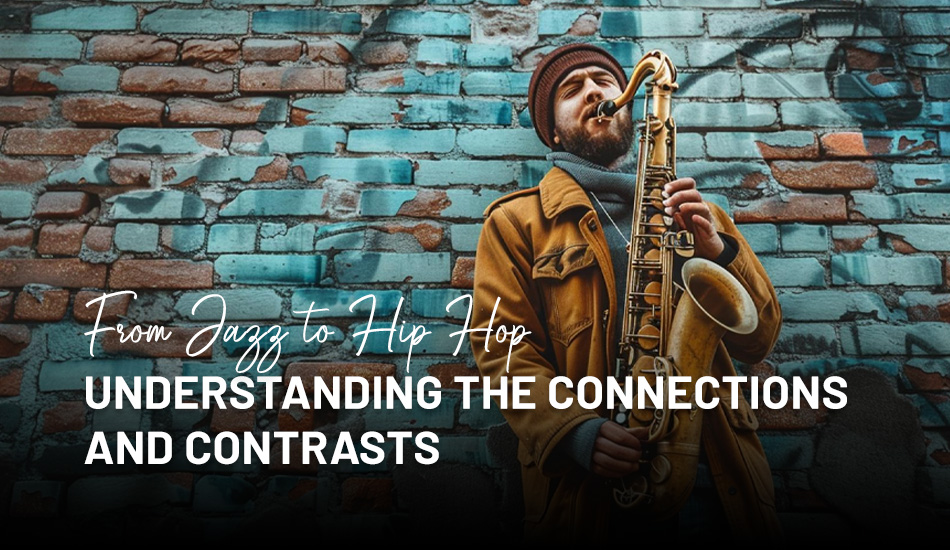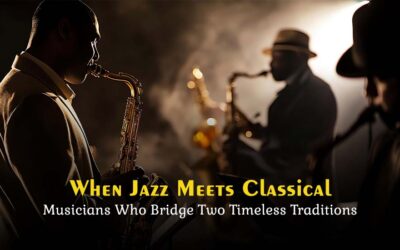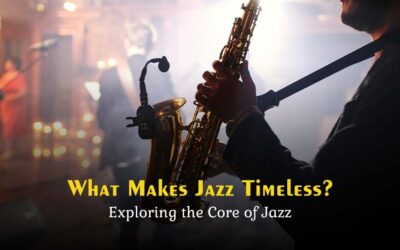Music, being the language of the soul, touches cultures and generations, as well as moods and feelings. Two of the most dominant genres in the musical industry, Jazz and Hip Hop, have not only defined society’s culture but also offered hope for voiceless people. Despite that, these genres bear a lot of similarities and, at the same time, are unique in their characters.
In this detailed consideration, we will uncover the differences and similarities between jazz and hip-hop, learning about the origin of both styles, the improvisational aspects of both, the musical instruments used, their rhythms, cultural backgrounds, the approach to collaboration, and so on.
From their outside appearances, one can easily assume that Jazz and Hip Hop are two styles that could not be more different. Thus, jazz is one of the most refined forms of musical performance that originated in the early twentieth century and is based on the improvisational merging of African rhythms and European harmonies. Hip hop, on the other hand, began in the 1970s as a rough city-styled form of music that African American and Latino youth of New York City had to respond to the socio-economic problems troubling their communities. However, both genres are highly associated with cultural discourses of the particular epoch and have greatly affected the music of the present day and night all over the world.
Differences Between Jazz and Hip Hop
Origins
Jazz evolved at the close of the 19th century and in the early decades of the 20th century in New Orleans, Louisiana, a city in which jazz was recognized as the cradle of this type of music since it is here where it was born. This genre developed originally from the blues, spirituals of black Africans, and European formal music, and had a groovy and complex tune with some features of improvisation and syncopation. On the other hand, hip-hop originated in the Bronx during the 1970s out of the streets. It started as a subculture for which music was just one of a group of related creative activities, which included DJing, rapping (MCing), graffiti, and break dancing. Hip-hop soon found its purpose of being the voice of the timid masses of the oppressed general youths in urban society through meaningfully written lyrics and Ragga music.
Improvisation
Improvisation lies at the heart of both Jazz and Hip Hop, though it manifests differently in each genre. Jazz musicians are known for their ability to create spontaneous melodies and harmonies during performances, often leading to new interpretations of familiar tunes.
This improvisational approach allows for a high level of personal expression and creativity, making each performance a unique experience. In hip-hop, improvisation is most evident in freestyle rap, where MCs craft spontaneous lyrics in response to their environment or the energy of the crowd. While jazz improvisation focuses on musical innovation, hip-hop improvisation often centres on lyrical creativity and rhythm.
Musical Elements/Styles
Jazz is said to have highly developed structural patterns with features such as swing, blues scales and difficult chord progressions. Jazz instruments are elements that have formed the heart of this music genre due to the style and texture they bring to the genre, including the saxophone, trumpet, piano, and double bass. Meanwhile, postmodern music has fewer humans playing in it, particularly the use of instruments in songs. In contrast, most songs in hip-hop use beats from drum machines, turntables and synthesizers. This is a practice where producers record small portions of other people’s songs and use them to produce new beats; sampling is characteristic of hip-hop music. While jazz distils itself more into melody and harmony, this one is much more about rhythm, rhyme, and beat.
Rhythm and Beats
In jazz, rhythm and beats may be swing rhythms and syncopation, which give the music a smooth dancing feel. Such sections are characteristic of the style in question and fit in perfectly to create the immediacy and high energy of the piece in question. Contrary to popular belief, hip-hop rhythms are very straightforward and more pace-oriented, supported by basic bass lines and emphatic rhythmic patterns, often with a marked emphasis on the basic beat. This is a tight rhythmic base in hip-hop, which corresponds to the emphasis on the flow in lyrics in most songs of this genre and is often responsible for the dynamics of both music and performance.
Cultural Context/Lyrical Content & Themes
Both Jazz and Hip Hop are deeply rooted in the cultural and social issues faced by African American communities. Jazz emerged during a time of racial segregation and economic hardship, serving as both a form of resistance and a means of cultural expression. Its themes often explore love, struggle, freedom, and the complexities of the human experience. Hip-hop, coming into existence later, became the voice of urban youth, addressing issues such as poverty, police brutality, and systemic inequality. Its lyrical content is often direct and confrontational, using storytelling and social commentary to highlight the realities of life in the inner city.
Collaboration
Collaboration is a significant aspect of both Jazz and Hip Hop. In jazz, musicians frequently come together to perform in ensembles, creating a collaborative and improvisational atmosphere. The interplay between musicians in a jazz ensemble is often what drives the music, with each member contributing to the overall sound. Similarly, hip-hop artists often collaborate, whether through featured verses, remixes, or live performances. This spirit of collaboration has led to innovative genre-blending, with artists from both Jazz and Hip Hop experimenting with fusion styles that incorporate elements from each other’s genres.
Similarities Between Jazz and Hip Hop
Country of Origin
Both Jazz and Hip Hop have their roots in the United States, particularly within African American communities. Their development is deeply intertwined with the social and cultural history of the country, making them not just musical genres but also significant cultural movements that have resonated globally.
Improvisational Nature
Improvisation is a fundamental characteristic shared by Jazz and Hip Hop. In Jazz, musicians use improvisation to express themselves freely, creating spontaneous compositions that can vary from performance to performance. This improvisational skill is what makes Jazz performances so dynamic and unpredictable. In Hip Hop, freestyle rapping serves a similar purpose, with MCs crafting impromptu verses that reflect their thoughts and experiences in real-time. This ability to improvise is a testament to the creativity and spontaneity that define both genres.
Impact on Modern Music
The influence of Jazz and Hip Hop on modern music cannot be overstated. Jazz has paved the way for numerous genres, including rock, funk, and even classical music, by introducing complex harmonies, rhythms, and improvisational techniques. Similarly, Hip Hop has not only revolutionized the music industry but also impacted fashion, language, and global culture. The genre’s emphasis on rhythm, storytelling, and innovation continues to inspire new generations of artists across various musical styles.
Conclusion
Jazz and Hip Hop are more than just musical genres; they are cultural movements that have shaped and been shaped by the social, political, and economic conditions of their times. While they differ in many respects, their shared roots, emphasis on improvisation, and impact on the world of music highlight the deep connections between them. As we continue to explore and appreciate these genres, the enduring legacy of Jazz and Hip Hop reminds us of the power of music to unite, inspire, and transform.
For further exploration, delve into the rich history of jazz music songs and discover the legendary jazz singers who have influenced generations of musicians.




